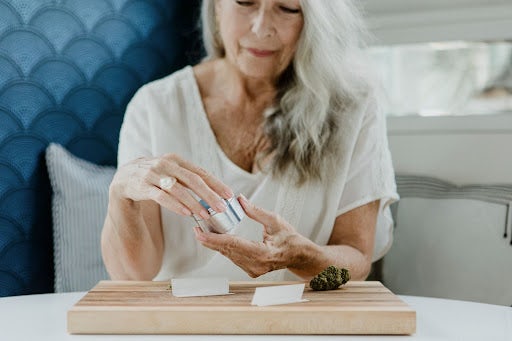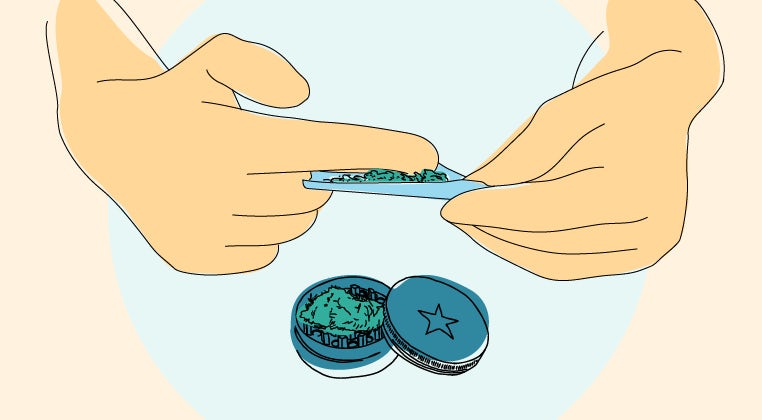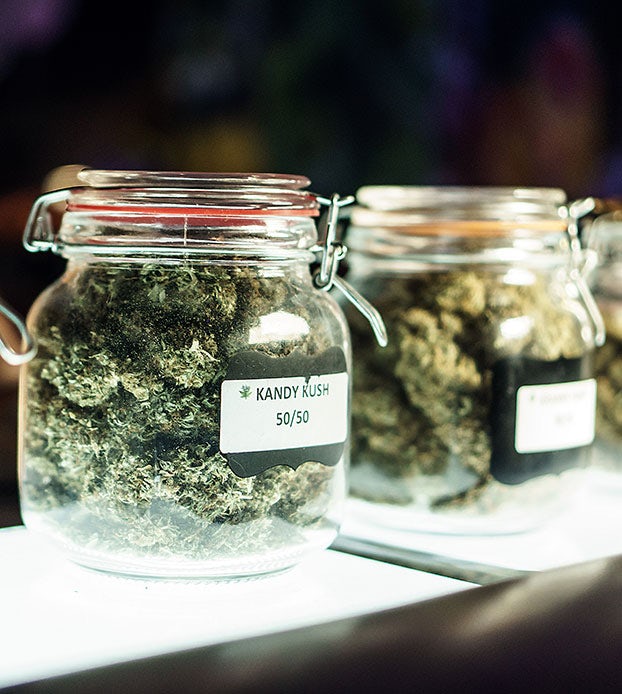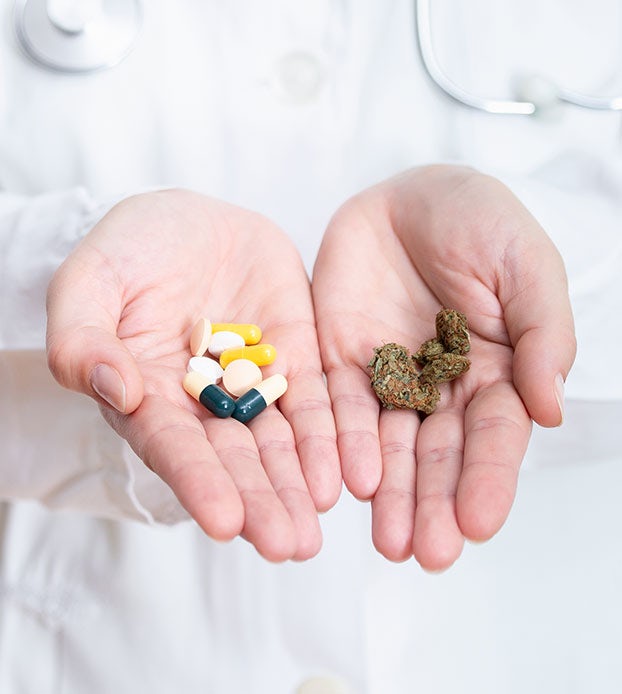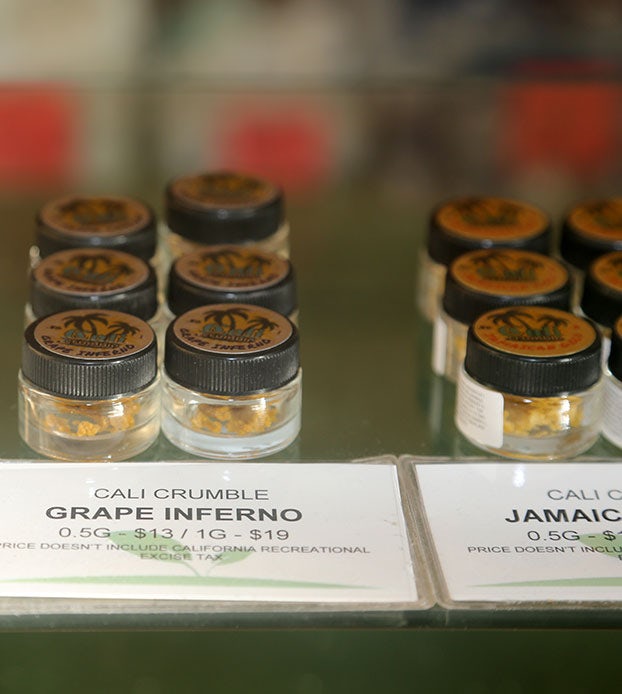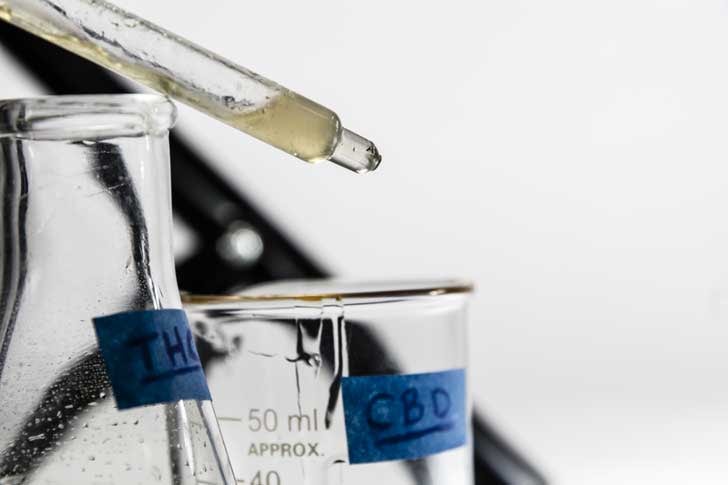The percentage of Americans over 65 who had reported using cannabis in the past year had increased tenfold between 2006 to 2018, from 0.4% to 4.2%, according to a study published in February, 2020.
Even the American Association of Retired Persons (AARP) now supports the use of medical marijuana in states where it is legal and officially calls for more research on the medicinal use of cannabinoids.
➤ Get your medical card now with The Cannigma Medical
The AARP, explaining its 2019 policy change, stated that its decision was based on “the growing body of research suggesting marijuana may be helpful in treating certain medical conditions and symptoms.”
But as mainstream as cannabis has become, there are still some things any senior should consider before deciding whether to get a medical marijuana card.
1. How seniors can get a medical marijuana card
In states with legal adult-use (“recreational”) cannabis, anyone over the age of 21 simply needs to go to the dispensary of their choice, with enough cash on hand to buy whatever strikes their fancy.
If you live in a state that only has a medical cannabis card, then you’ll need to become a licensed patient.
In legal medical marijuana states, the processing of applying for a medical marijuana card is quite consistent. Here’s what you need to do:
- First, schedule a meeting with a physician who is approved by the state to certify medical cannabis patients. Depending on the state, you may only be able to gain approval if you have one of a set list of qualifying health conditions, though in some states, it’s solely up to the discretion of the physician, and there is no ironclad list of conditions. The physicians’ certifications typically cost around $100-$200 depending on your state of residence.
- With the physician’s certification, you will then need to register online with your state’s medical marijuana authority (usually the state department of health) and submit all of the relevant documents, such as proof of identity, physician certification, and proof of residence. You may also need to pay an application fee.
- Typically, if approved, the card will be delivered by mail or digitally within a matter of weeks. And if you aren’t comfortable using the online application portal, many states also allow applications by mail.
2. What a medical marijuana card gets you
In states with legal adult use marijuana, many people – including the elderly – may wonder why bother getting a medical cannabis card when you can just stroll into a dispensary? That’s understandable, but a medical marijuana card still has its benefits. These include:
Tax benefits
You can benefit from tax breaks on your cannabis purchases, which can save a lot of money, especially if you live in a state with especially high sales tax or excise tax on cannabis purchases.
Medical only goods and services
With a medical marijuana card you can also receive preferential treatment at some combined medical/adult use dispensaries. These dispensaries may dedicate a certain amount of their cannabis products solely to medical customers, so you’re less likely to not be able to find what you need, and they may also allow medical cannabis patients to skip ahead in line.
Access to healthcare professionals
While experiences can vary highly, some patients may benefit from having an appointment with a doctor and visiting medical cannabis dispensaries that have healthcare professionals on staff.
Home grow
Finally, if you have a green thumb, certain states will allow home cannabis cultivation – but only for licensed medical cannabis patients.
3. Which conditions medical marijuana may help
Across the United States, the most common health condition treated with medical cannabis is chronic pain. This includes all types of pain, from neuropathic pain to fibromyalgia to joint pain from arthritis.
Another highly common reason people use medical cannabis is as a sleep aid, even though certain cannabinoids including THC can inhibit REM sleep and cause you to dream less.
In addition to helping people get a good night’s sleep and some relief from pain, individuals with a number of different conditions report benefits from medical cannabis, including:
- cancer + chemotherapy related symptoms
- anxiety
- nausea
- epilepsy
- glaucoma
- Crohn’s disease
- Parkinson’s disease
But if we look past specific health conditions, there’s also the fact that cannabis can just make people feel great. The intoxicating effects of cannabis – in moderation – can make music more enjoyable, jokes and movies a lot funnier, and all types of food absolutely irresistible. Consider it a sort of personal wellness tool that can put just a little more sunshine in the average day.
4. It’s best to start low and go slow – and try some trial and error
Medical marijuana isn’t going to affect everyone in the exact same way. Certain people may have a stronger tolerance or different metabolism, or others may experience a more intense psychoactive effect. The same dose that could relax one patient, could make another one feel anxious or uneasy.
When you’re trying new cannabis products, it’s always a good idea to take your time. This is especially true if you have no background with cannabis, or if the last time you smoked marijuana was a few decades ago, when it wasn’t nearly as potent as the cannabis grown today.
If you’ve decided to start your journey with edibles or tinctures, try a small dose, perhaps even half the recommended portion. And keep in mind, cannabis edibles can take 1-2 hours to kick in, sometimes longer, so patience is key.
The same logic applies to smoking or vaping. If you’re new to medical cannabis, take one, maybe two gentle inhalations and then kick back and wait about 15 minutes. At that point you’ll have a much better idea of the effects.
This isn’t a race, it’s a marathon, and there’s no reason not to ease your way in.
5. You don’t need to get high
Countless people still associate cannabis with getting “stoned” and pigging out on salty snacks, and if you’re new to marijuana, you may have that same perception as well. The truth is, as strong as today’s cannabis is, you can still enjoy cannabis and its health benefits without getting high.
Thanks to a growing market of cannabidiol (CBD) products, as well as cannabis flower that is high CBD and low THC (the chemical responsible for the “high” of marijuana), there are plenty of options if you want to use cannabis but avoid the high. CBD has potential to help treat a variety of conditions including anxiety and depression, and has anti-inflammatory properties that can potentially help treat a variety of inflammatory conditions. And unlike THC, it does not make you high.
But even if all you have is just plain marijuana (also known as high THC cannabis) you may be able to get some of the benefits without getting high. “Microdosing” cannabis is gaining popularity as a way to treat a number of ailments such as pain and nausea, without experiencing any intoxicating effects. It basically just involves taking a very small dose, which is small enough not to produce intoxication, but may still have health benefits.
6. Marijuana is safe – but there can be side effects
Medical marijuana is far safer than countless legal pharmaceuticals, but that doesn’t mean that there aren’t some potential side effects, including for seniors who use cannabis.
If you’re someone who often has problems with anxiety or panic attacks, the wrong dose of THC could potentially worsen anxieties, creating an unpleasant experience that may have you swearing off medical marijuana. Cannabis preparations, particularly those rich in THC, can also have a negative effect on people with mental health conditions such as schizophrenia or bipolar disorder, and this is why people who present such conditions are often advised to avoid marijauna.
One important consideration is that the intoxicating effects of some cannabis preparations may cause balance and coordination issues, as well as alter blood pressures and could increase the risk of fall and injury.
Seniors are more likely to have underlying heart problems than the average cannabis user. This is particularly important because THC can cause changes in heart rate and alter blood pressures. For this reason, medical marijuana can be risky for patients with serious cardiac problems, and these patients are encouraged to speak to their heart doctor before starting medical marijuana.
Older adults also suffer from respiratory issues more frequently. Both could mean that smoking cannabis is potentially more dangerous than it would be for a younger person. Luckily, vaping is considered a safer option, dry herb vaporizing in particular.. Also, edibles pose no respiratory risk, and there is a wider variety available now than ever before.
The health risks posed by cannabis are relatively low, especially compared to many other forms of medicine. At the same time, anyone who is new to medical marijaana – especially seniors – should take the time to consult a health care professional who specializes in cannabis, in order to find the best regimen and intake methods for them.
This is one of the ways that a medical marijuana card can really pay off even in states that have legal recreational cannabis dispensaries. The medical marijuana card can improve access to health care professionals who can help you find the safest ways to ingest cannabis, and minimize the risks you may face.
Sign up for bi-weekly updates, packed full of cannabis education, recipes, and tips. Your inbox will love it.

 Shop
Shop Support
Support
